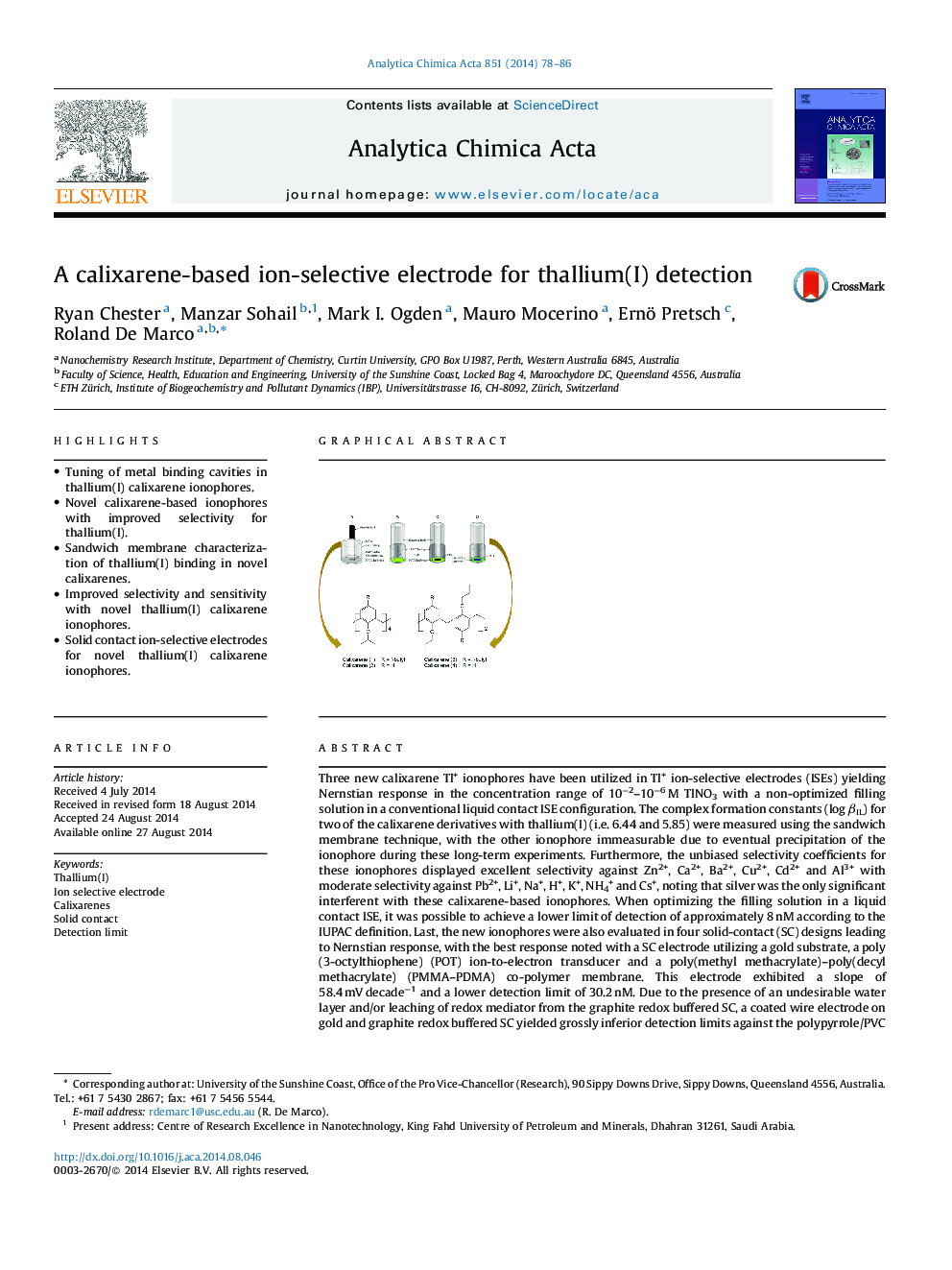| Article ID | Journal | Published Year | Pages | File Type |
|---|---|---|---|---|
| 1163791 | Analytica Chimica Acta | 2014 | 9 Pages |
•Tuning of metal binding cavities in thallium(I) calixarene ionophores.•Novel calixarene-based ionophores with improved selectivity for thallium(I).•Sandwich membrane characterization of thallium(I) binding in novel calixarenes.•Improved selectivity and sensitivity with novel thallium(I) calixarene ionophores.•Solid contact ion-selective electrodes for novel thallium(I) calixarene ionophores.
Three new calixarene Tl+ ionophores have been utilized in Tl+ ion-selective electrodes (ISEs) yielding Nernstian response in the concentration range of 10−2–10−6 M TlNO3 with a non-optimized filling solution in a conventional liquid contact ISE configuration. The complex formation constants (log βIL) for two of the calixarene derivatives with thallium(I) (i.e. 6.44 and 5.85) were measured using the sandwich membrane technique, with the other ionophore immeasurable due to eventual precipitation of the ionophore during these long-term experiments. Furthermore, the unbiased selectivity coefficients for these ionophores displayed excellent selectivity against Zn2+, Ca2+, Ba2+, Cu2+, Cd2+ and Al3+ with moderate selectivity against Pb2+, Li+, Na+, H+, K+, NH4+ and Cs+, noting that silver was the only significant interferent with these calixarene-based ionophores. When optimizing the filling solution in a liquid contact ISE, it was possible to achieve a lower limit of detection of approximately 8 nM according to the IUPAC definition. Last, the new ionophores were also evaluated in four solid-contact (SC) designs leading to Nernstian response, with the best response noted with a SC electrode utilizing a gold substrate, a poly(3-octylthiophene) (POT) ion-to-electron transducer and a poly(methyl methacrylate)–poly(decyl methacrylate) (PMMA–PDMA) co-polymer membrane. This electrode exhibited a slope of 58.4 mV decade−1 and a lower detection limit of 30.2 nM. Due to the presence of an undesirable water layer and/or leaching of redox mediator from the graphite redox buffered SC, a coated wire electrode on gold and graphite redox buffered SC yielded grossly inferior detection limits against the polypyrrole/PVC SC and POT/PMMA–PDMA SC ISEs that did not display signs of a water layer or leaching of SC ingredients into the membrane.
Graphical abstractFigure optionsDownload full-size imageDownload as PowerPoint slide
